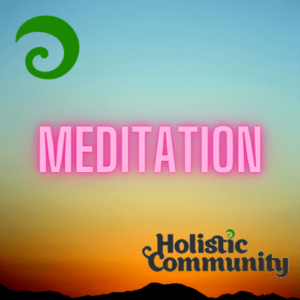Introduction
 Meditation (from Latin meditari,”contemplate”), form of religious or spiritual contemplation, and the basis of most Eastern religions, including Hinduism, Buddhism, and Daoism, as prayer is to the Christian, Islamic, and Jewish religions. The difference between prayer and Eastern meditation is that the former is a petition to, or dialogue with, God, and the other is a detached observation of one’s own mind, and its processes.
Meditation (from Latin meditari,”contemplate”), form of religious or spiritual contemplation, and the basis of most Eastern religions, including Hinduism, Buddhism, and Daoism, as prayer is to the Christian, Islamic, and Jewish religions. The difference between prayer and Eastern meditation is that the former is a petition to, or dialogue with, God, and the other is a detached observation of one’s own mind, and its processes.
The earliest recognized practice of meditation is from ancient India, where it has been established for thousands of years, and was known by the Sanskrit word dhyãna. This became Chan in China, and Zen in Japan. The Buddha developed meditation in about 500 BC, and the Indian scholar, Patanjali, systematized the practice in his Yoga Sutras around 250 BC. These two teachers remain to this day the major influences on meditation around the world.
The Eastern concept of meditation came to the West via several routes, mainly over the course of the 20th century. Buddhism and yoga have introduced many people to the practice, and so have some new religious movements, such as the Maharishi Mahesh Yogi’s Transcendental Meditation (TM), which made meditation simple and accessible. Bhagwan Shree Rajneesh developed an important and innovative link between Indian meditation and Western psychotherapy in the 1960s.
In the modern world, meditation is often used as a non-religious technique for relaxation and stress reduction. Many claims are made for its benefits, some substantiated by scientific research into brainwave patterns, physiological changes, and long-term psychological improvements. The spiritual aims are peace of mind, wisdom, and, ultimately, a state of enlightenment or self-realization.
Meditation can be learnt from books and practised alone, but it is highly beneficial to find a good teacher, and work with a group of students. There are many courses and retreat centres within the different traditions.
II The Basic Eastern Method
Meditation is essentially a simple technique, and yet can be mystical and profound in its results. There are many different schools with their own teachings, but the classic introductory way to meditate is to sit cross-legged on the floor (or a chair), with one’s back straight, and one’s eyes closed. The attention is focused on monitoring the breath, and noting thoughts crossing the mind, without any judgement or attempt at control, but as a silent and detached witness. If the mind throws up distractions, the meditator returns to simply observing the breath each time the distraction happens. At first, this is best done for up to 20 minutes, but longer periods become possible with practice. A relaxed and unhurried attitude is important, since slowing down and observing the mind to see how it works is central to the philosophy behind meditation.
III Christian Meditation
In Christianity, meditation is usually seen as a form of silent prayer and reflection on biblical and religious topics, which is a different approach. Contemplation is closer to the Eastern forms of meditation described above, although it is still topic-based. This contemplative tradition has been relatively undeveloped in the Western Churches, and it has been suggested that it is being revived in response to the spread of Eastern meditation.
“Meditation,” Microsoft® Encarta® Online Encyclopedia 2005 http://uk.encarta.msn.com © 1997-2005 Microsoft Corporation. All Rights Reserved.
Meditation Links:
Meditation Techniques – information on various meditation methods as well as as large range of free meditation techniques.
Holistic-Online.Com (Meditation) – information and practical introductory guides on meditation.
